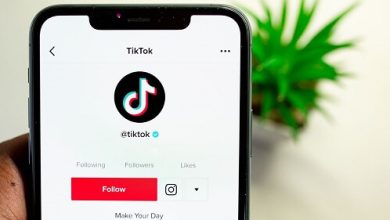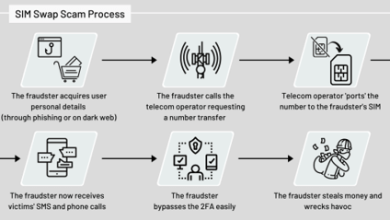Enhance the Mobile App User Experience with These Evergreen Strategies
Thousands of developers, hundreds of emerging trends, and billions of apps development, but, there is one thing in common that every custom mobile app development company strives for i.e., the user interface and experience over the app. With the rising cut-throat competition, it is “The Thing” that separates a particular app from the others available in the market.
With minimal effort, the audience wants their smartphones to really act with the smart touch. However, without understanding the in-app behavior and digital footprints, you will fail to satisfy every customer or reach their desired app experience level. As a developer, you need to delve into every factor of user interface and experience, that potentially can affect the audience’s interaction with the app and thereby change their app perception.
This blog talks about effective ways that can help you in launching a successful app and achieving an optimal UX for your dream app. Audiences have already started scrutinizing the user experience of an app, do you wish to pass that test of scrutinizing? Keep scrolling to know the ways that you can implement throughout the app development life cycle.
Error-free functionality:
The reason why this factor is on the list is that 21 percent of users abandon the mobile app if the app fails to meet their expectations. Developers regret not paying enough attention to this at the road mapping stage itself, which could have boosted their power of creating an error-free functional application. To achieve this goal, it is better to prioritize the feature list at the development stage itself, which can allow you to finish the task effortlessly.
Right at the inception stage, get the answers to the following questions.
- Who are the product end-users?
- When will this app be useful to the audience?
- For what purpose is the app made for?
- How to acknowledge the audience about the product launch beforehand?
These answers will help you in getting the list of relevant mobile functionalities that your app should possess. The error-free functionalities help in retaining a customer and also encourage new users to download the app from the store.
Powerful Onboarding:
Customer onboarding is a critical step to ensure that the customer stays on the app without uninstalling it. It would help if you showed them how efficient your app is in performing the desired task. A powerful onboarding experience lays the foundation for customer retention.
Optimizing the onboarding experience includes designing the UX in a way that shows a tutorial of how and where to go in the app every time when the user comes back after a specific period of time.
If your app is a treasure trove of functionalities, but some of them are hidden, you need to show them the way to the masked functionalities. An excellent onboarding not only retains the customers but also mitigates the app abandonment rate drastically. It increases the app value and distinguishes you as an awesome app from average ones.
Another thing that you should try doing is reducing the account creation and login process steps. Allow them to log in through multiple channels like Facebook or Google account. Such features increase the lifetime value of the application by attracting new customers.
Native elements for usability:
The apps elements should be intuitive, and the layout of the information, design, and content should be as simple as possible. The icons and the symbol should easily be able to replicate the act to perform over it, be it, either by selecting, tapping, or swiping the icon.
The visual effects that you incorporate in the app should not make the app look cluttered or inconsistent. You need to optimize every single element and also ensure that it looks consistent throughout the app stages. For example, if you’re developing an app for a custom writing service, the “order” button should be on the home page, not in a separate tab. Do not include irrelevant design or pointless design elements that can ruin the transversing through the app experience of the user.
Make searching effortless:
Users come to your site to achieve their goal, and if you fail to satisfy them at this point, you will probably lose the game. You need to integrate effective strategies that can make the searching task effortless and quick. For this, you can include a barcode scanning feature or strong keyword research features that help the audience with easy surfing.
You need to guide them at every stage of their journey over the application and help them in finding out what exactly they are looking for (in a jiffy).
If your application has poor navigation, there are chances of customers bouncing back to find another suitable and efficient application. It is the need of the hour to design an outstanding application architecture that facilitates easy navigation and searching features.
Enhance app security and increase trustworthiness:
What is the first thing that happens when you download an application? There is a long list of permissions that pops up on the screen, waiting for your approval before accessing the application. These permissions often include asking for irrelevant information related to credit cards or accessing permission for your photo gallery.
First thing, asking for such private information usually affects the trustworthiness of the user over the app. They feel uncomfortable sharing such private and precious information with you, even before they have started knowing who you are and what the app is about.
Hence, while designing an app, you need to ensure that no such private information is asked from the user at the inception stage. You simply need to outline your business & app policies and make them feel comfortable interacting with you over the app.
If you have an application that deals with the gathering of financial information, then display trusted badges of security over the app.
Reduce User Input:
Today the audience wants to put in minimal effort in accessing an application. And hence it is important that from registration till the checkout, you need to design an interface with minimal user input requirements. Don’t make the fields complicated or prolong the registration form, try to keep it as simple as possible that can ease out the end-user task.
You can also integrate tools and extensions that auto-fills the address bar or fetches the live user location for ease. Automating it will reduce the chances of errors and thereby mitigate the application drop-off rates. Such features might look minor but relatively have a huge impact on customer retention.
Personalizing user experience is the key mantra for application success. You need to align the user experience along with the features that you are planning to provide over the application. For taking the next progressive step, you can always contact a mobile application development company for a better understanding of the creation of an excellent UX for your application.













